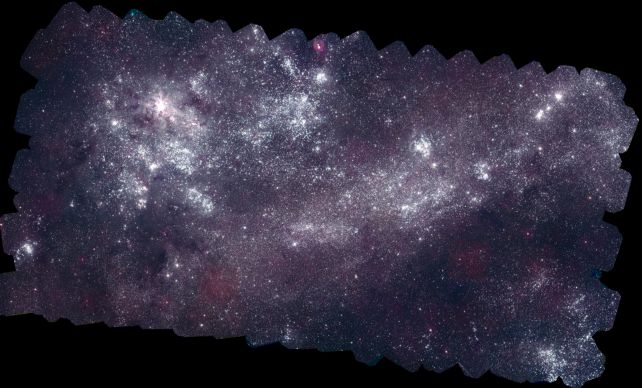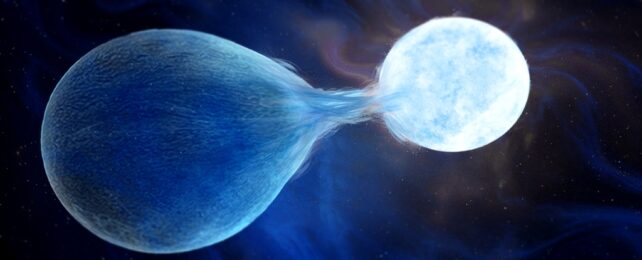When massive stars die, they don't go quietly. Their deaths are a supernova spectacle that can flare brighter than an entire galaxy in the night sky, spewing star-stuff out into the space around them while their core collapses into a black hole or neutron star.
We've cataloged a number of these explosions now and analyzed their light to find out what, exactly, stars are made of. And scientists have noticed a curious pattern.
A large number of supernovas are mysteriously devoid of hydrogen – suggesting that there must also be a significant population of hydrogen-poor stars from whence such supernovas come. In fact, astronomers predicted that around a third of all massive supernova progenitors must be hydrogen-poor.
But when it came to finding these hydrogen-poor supernova candidates in the Universe, searches turned up a single lousy possibility, leaving scientists scratching their heads.
Well, they're scratching no more. A dedicated survey to find these stars has turned up 25 stars that neatly match the profile. These hypothesized stars really are out there, and now we know how to identify them.
"This was such a big, glaring hole," says astronomer Maria Drout of the University of Toronto, who co-led the research with astrophysicist Ylva Götberg of the Institute of Science and Technology Austria, who at the time was at The Observatories of the Carnegie Institution for Science, Pasadena, in the US.
"If it turned out that these stars are rare, then our whole theoretical framework for all these different phenomena is wrong, with implications for supernovae, gravitational waves, and the light from distant galaxies. This finding shows these stars really do exist."

According to theory, stripped-envelope supernovas, as these hydrogen-poor supernovas are known, are produced by binary stars.
We've seen stars in close binary systems slurping material off each other before. In such pairings one star draws the hydrogen envelope off its binary companion, leaving behind a helium star with little hydrogen. As a consequence, the companion spews out little hydrogen when it eventually blows up.
We've seen helium stars at the high end of the stellar mass range; these are hefty enough that, when they die, their cores will moosh down into black holes. But in the mid range, stars that started between 8 and 25 times that of the Sun, there has been very little.
This is a problem. These stars are the precursors to neutron stars, and, according to theory, the progenitors of neutron star mergers. They should be significantly more numerous than the really big beasties.
But they're also harder to spot. Stripped of their outer material, much of the light they emit is outside of the visible light spectrum; and with a larger, brighter companion glutted on all the hydrogen it just ate, in a close orbit, the helium star is even harder to see.
So, the researchers conducted their surveys in ultraviolet light. Between 2018 and 2022, used the Swift Ultra-Violet/Optical Telescope to study millions of stars in the Large and Small Magellanic Clouds, dwarf galaxies that orbit the Milky Way. They selected 25 candidates that showed unusual ultraviolet profiles for follow-up, using the Magellan Telescopes to obtain optical spectroscopic data to reveal the stars' chemical compositions.

And they were right on the money. Their stars had the high temperatures, high surface gravity, high helium, and low hydrogen they expected to see for intermediate-mass helium stars. Sixteen of them even had motion consistent with a binary companion.
"We showed that these stars were bluer than the stellar birthline, the bluest phase in a single star's lifetime," Götberg says.
"Single stars mature by evolving towards the redder region of the spectrum. A star only shifts in the opposite direction if its outer layers are removed – something that is expected to be common in interacting binary stars and rare among single massive stars."
This is just a first step. The team is currently studying their stars in greater detail to learn more about them, and expanding their search to look for even more helium stars. They've also made their data and theoretical models public, so that other scientists can join the search.
"This work allowed us to find the missing population of intermediate-mass, stripped helium stars, the predicted progenitors of hydrogen-poor supernovae. These stars have always been there and there are probably many more out there. We must simply come up with ways to find them," says Götberg.
"Our work may be one of the first attempts, but there should be other ways possible."
The research has been published in Science.
